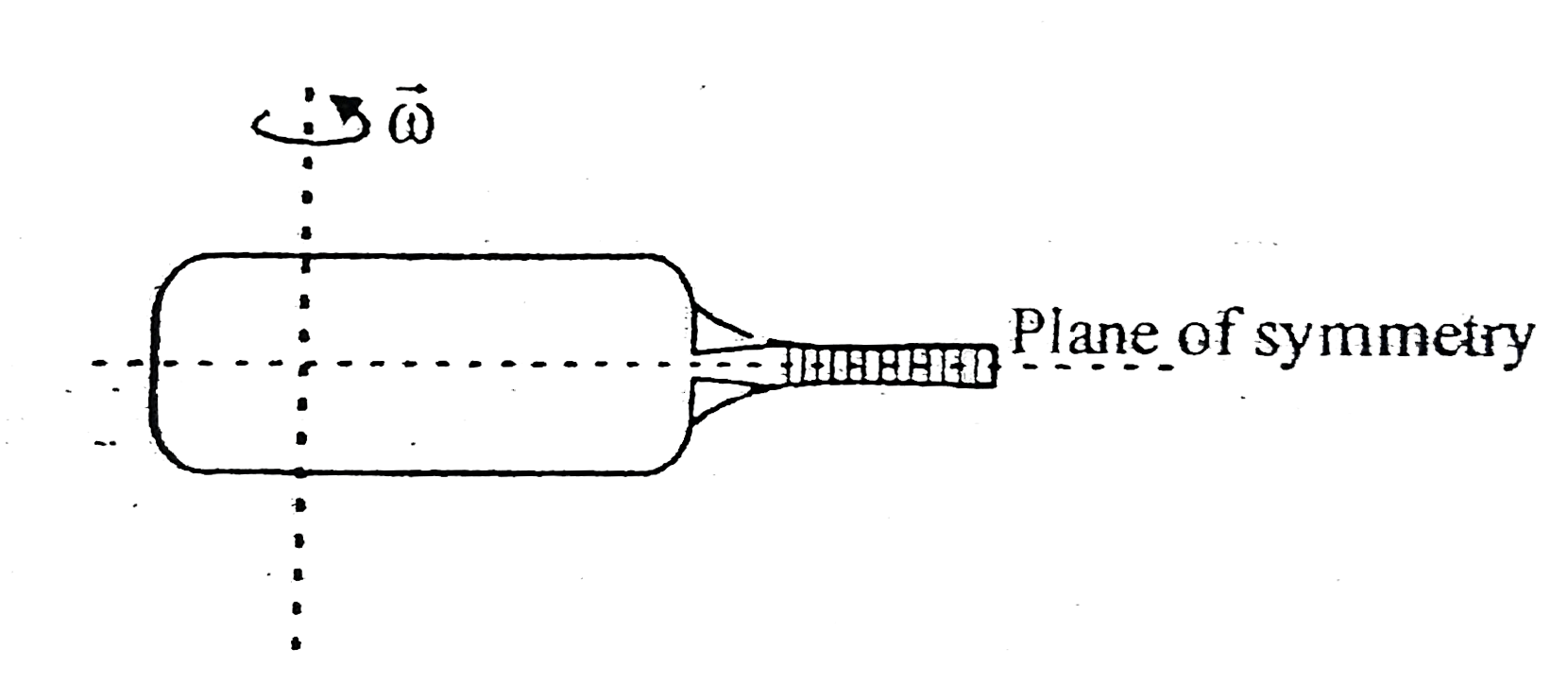If for a rigid body, where resultant torque & =angular momentum about a point and both are non-zero. Then
constant
=constant
will increases
may increase
The correct Answer is:D
so
In case of will increases
Topper's Solved these Questions
Similar Questions
Knowledge Check
- Question 1 - Select One
The correct relation between torwue τ and angular momentum L is
Aτ=dLdtBL=dτdtCτ=L×tDL=τ×t - Question 2 - Select One
Torque (→τ) acting on a rigid body is defined as →τ=→A×→L, where →A is a constant vector and →L is angular momentum of the body. The magnitude of the angular momentum of the body remains same.
→τ is perpendicular to →L and hence torque does not deliver any power to the body.AStatement-1 is True, Statement-2 is Ture , Statement -2 is a correct explanation for statement -1.BStatement-1 is True, Statement-2 is True , Statement-2 is NOT a correct explanation fro Statement -1.CStatement-1 is True, Statement-2 is False.DStatement-1 is False, Statement-2 is True. - Question 3 - Select One or More
The torque →τ on a body about a given point is found to be equal to →A×→L where →A is a constant vector and →L is the angular momentum of the body about the point. From this its follows that -
Ad→Ldt is perpendicular to →L at all instants of time.Bthe components of →L in the direction of →A does not change with time.Cthe magnitude of →L does not change with timeD→L does not change with time.
If →A×→B=0, what can be said about the non-zero vectors →A and →B ?
View SolutionThe relation between the torque τ and angular momentum L of a body of moment of inertia I rotating with angular velocity ω is
View SolutionTwo particle are initially moving with angular momentum →L1 and →L2 in a region of space with no external torque. A constant external torque →τ then acts on one particle, but not on the other particle, for a time interval Δt. What is the chargne in the total angular momentum of the two particles ?
View SolutionThe torque τ on a body about a given point is found to be equal to A x L, where A is constant vector and L is the angular momentum of the body that point. From this, it follows that
View SolutionFigure shows a rigid body that is mirror symmetric about a plane and rotates about an axis perpendicular to that plane.

Statement-1: Angular momentum of above mentioned rigid body can be expressed by →L=−→Iω where I is moment of inertia about rotation axis.
Statement-2: →–––(L)=I→ω can be applied only for those rigid bodies that have rotational symmetry about an axis and rotate about that symmetry axis.View Solution

